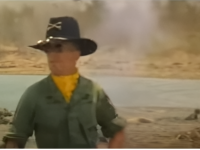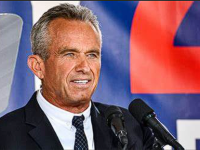Photography. Behind the scenes of Bagram, an afghan airbase in limbo

THE WAR in Afghanistan has been over for almost a year, but Bagram Airfield—the biggest US military base in the country—remains busy. Within its defensive layers of dreary walls, a small contingent of troops and contractors still stand watch and conduct operations.
Photographer Jason Koxvold spent three days in June at Bagram for Black-Water, a series exploring what it means to be perpetually at war in the Middle East. It includes images taken in Kuwait and elsewhere in Afghanistan, where Koxvold documented what the reduced US military footprint—down from 180,000 troops when President Obama took office to 10,000 now—looks like. He spent time in Kabul, where troops remain stationed under the NATO mission Operation Resolute Support, but found Bagram offered a sharper look at US involvement. “[It’s] much more of an American project,” he says.
Bagram played a crucial role in the War on Terror and in some ways represents all its aspirations and failures. The US expanded the Cold War-era base after the September 11 attacks, and at its height, it housed 40,000 troops who supported some 140,000 missions a year—including the one by Seal Team Six that killed Osama bin Laden. But authorities also sent terror suspects there for questioning before sending them on to Guantanamo Bay Naval Base. “[Bagram is] probably the highest-security facility I’ve visited and feels like a prison in some regard,” Koxvold says.

By the time he arrived, the base was a ghost of its former self. Tent cities had been disassembled, temporary housing demolished, and concrete barriers removed to shrink the airfield’s perimeter. Yet the place bustled with activity. Fighter jets and transport planes made regular flights, and rockets routinely came in over the fence. And life went on. Soldiers worked out in the gym and ate lunch in the cheerful cafeteria, staffed by Afghan employees. “Many of the troops have a M*A*S*H-like cynicism—they barely raise an eyebrow when alert codes are broadcast,” Koxvold says.
Koxvold wanted to thoughtfully reflect Bagram’s strange mood, much the way a good portrait photographer captures his subject’s soul. He decided to work with the 4×5 large-format camera he uses for fine art work. Such camera’s aren’t idea in those conditions, as they require long exposures, a heavy tripod, and about $60 per image. That meant plotting shots carefully.
To do that, Koxvold scoured aerial imagery and met with the base historian, who told him about interesting sites, like the 9/11 mural—a surreal montage that shows the Twin Towers burning just beyond Taliban-controlled mountains in Afghanistan. Every night, he and a press officer went over a list of things he wanted to shoot, and troops would escort him to approved locations the next day. “There is lots that goes on at Bagram that you absolutely cannot photograph, and as long as I respected that, we had no problems,” Koxvold says.
The photographer’s hard work paid off. The series has a rich emotional tenor that reverberates through each image, whether it’s a picture of a group of Afghan workers watching American television or a soldier hanging out in the lounge. There’s a heavy, inescapable sense of waiting—for it all to end, for everyone to finally go home, for life to finally return to normal.1
UPDATE 15:42 EST 09/21/15. This post was updated to note that the first photo is a Russian guard tower, not a Russian air traffic control tower.










